Antique Porcelain Age Signs
Porcelain age signs give us an opportunity to determine whether a ceramic item is really antique or more recently made. Age characteristics can be fake, but the average age faking can be detected by knowledgeable collectors or dealers.
If a piece of China shows no visible age signs at all, we consider it as recently made. On the other hand, if there are too many age signs present it is necessary to carefully check in detail to make sure the item is not a fake.
But, you need to be aware that the age signs of ceramics are different from those of other antiques. You cannot come and decide age because an item looks old or gives the feeling of age.
Sometimes genuine age signs are very subtle, or an item shows some production traces belonging to earlier eras.
See also
Faking the Age of Porcelain
Easily recognizable porcelain age characteristics
Discoloration and Glaze Deterioriation:
Glaze and decoration do not get discolored under normal circumstances
with porcelain, even over extended periods of time. An exception are
items that have been in the soil or sea for a very long time.
|
Ming bowl with its 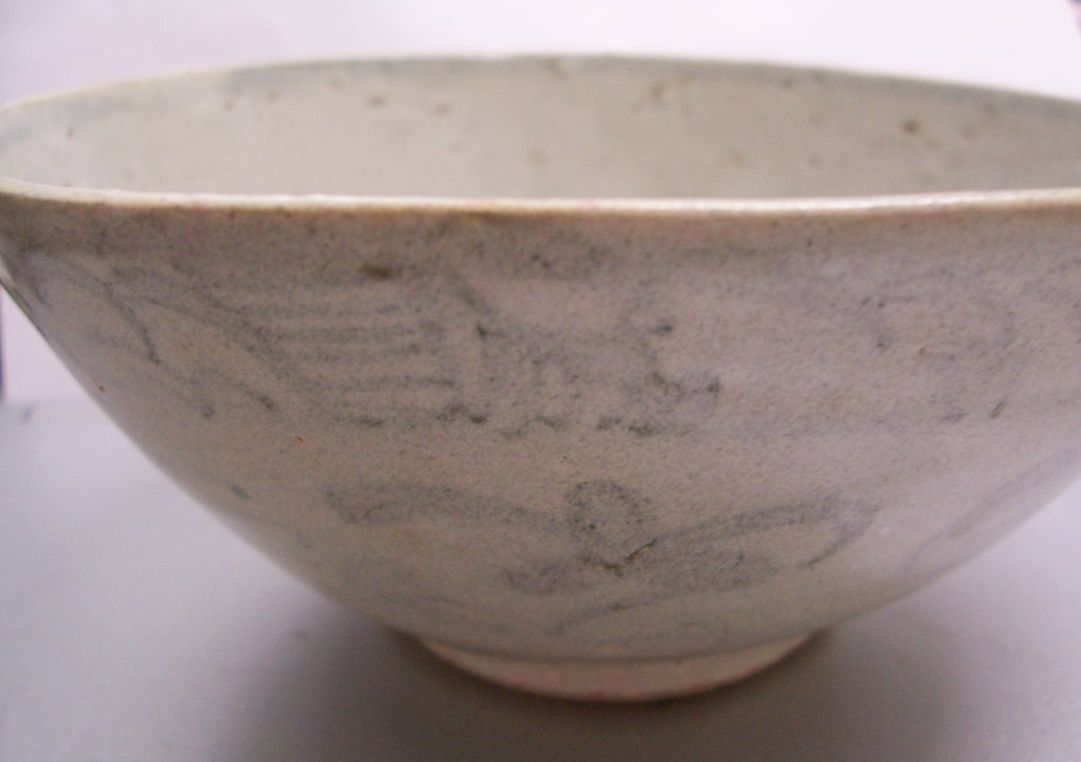 |
With shipwreck porcelain that has been in the water for
less than 200 years, many items are still in superb condition
now and may show little discoloration or bleaching. |
Crackles:
Crackles may be another exception... crackle lines can turn yellowish brown with age even under normal circumstances
|
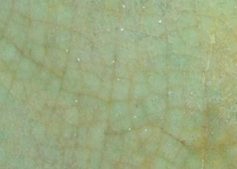 |
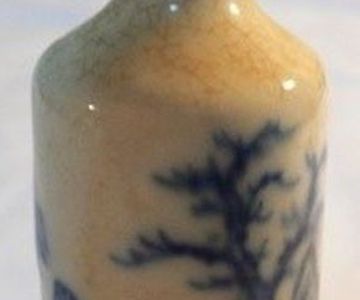 |
But be careful, crackles can be and are created artificially since ancient times, and they lend themselves for making an item look old. It is necessary to always check carefully whether porcelain age signs are genuine or made to deceive unsuspecting buyers.
In fact the Ge wares of the Song dynasty (960-1279) were made exclusively with crackles as main decoration. Such wares were made throughout the history of Chinese porcelain.
Shown below is the crackled surface of a Ming dynasty jar.
These are not artificially induced crackles.

Rust spots:
Iron residue contained in the clay moves slowly to the surface of the
ceramic body over a long period of time, forming small rust spots. On
rare occasions these may be larger, but mostly they appear as tiny
spots.
 |
Rust spots may look black to the eye if small, but are light brown if enlarged. |
Glaze contractions:
Glaze contractions can be a porcelain age sign, but not in the sense of
the porcelain having "aged". Instead, they are rather symptoms of kiln
conditions at the time of manufacture. Glaze contractions are found in
early porcelain, as for example in Ming dynasty porcelain, but also in
items made as late as the early 20th century.
They can be considered as "indirect" or "circumstantial" porcelain age signs, an
indication of the production environment and methods at the time an item was manufactured.
|
Think of them as manufacturing traces pertaining to a period or era when kiln conditions were such that glaze
contractions developed on porcelain. |
Glaze contractions are small spots where a hole or recess appears on the glaze surface of Chinese porcelain. They have a relatively simple explanation.
|
One of the main causes is some oily or combustible substance sticking to the
clay surface before the glaze was applied. The glaze covers that
substance but not the body itself. |
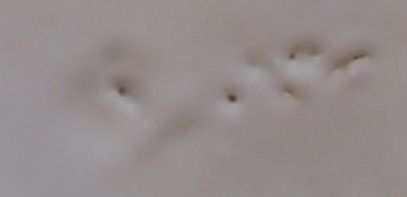 Recesses in the glaze |
This leaves a spot without glaze on the porcelain body. The melting glaze will flow into that empty spot sometimes; depending on the glaze thickness of the surrounding area the empty spot may be completely filled or only partially. This may then result in a concave spot (indent) or tiny hole in the glaze.
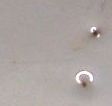 |
In some cases the spots are very shallow and are only visible if viewed at an angle, depending on the light conditions. |
Chinese porcelain exceeding a certain age normally shows some glaze contractions. If there are none at all on the whole body or bottom of an antique item, better check carefully for rust spots or other age signs. The item may not be that old after all. Always also check also the bottom area and inside in case of of vessels. See firing faults.
|
Wear of on-glaze decoration:
|
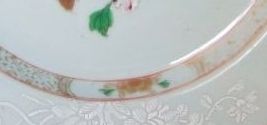 |
Presence or absence of certain colors:
The presence or absence of certain colors in the decoration can also be indicative of the period of manufacture.
These can be used in the same way as other porcelain age signs for verification of authenticity and dating.
Keep in mind that some colors were not available until later in the Qing
dynasty, or were only used for limited periods, or with specific item types. Certain colors were available for decorating porcelain only
after materials or techniques were developed, which made it possible for the colors to remain viewable after
firing in the kiln. Thus colors we may know but which could not be fired at certain times may mean that items from that specific period are later fakes.
From the end of the Ming dynasty and beginning of
the Qing dynasty (17th century) the kilns were able to control quality
better. By the Qianlong period, in the second half of the 18th century,
quality was at its peak and many defects had virtually disappeared.
However,
after the Qianlong period internal strife and the opium wars, Taiping rebellion, etc. were
causes for a decrease in quality. This would have been mainly due to the
loss of skilled kiln workers who fled to
avoid harm, or who may not have been paid and simply left.
Glaze Characteristics of Chinese Porcelain
See Porcelain Age Faking Methods
Go from Porcelain Age Signs back to Home page
Glaze Age Signs - Dead Bubbles
Last update: 20th August 2024
